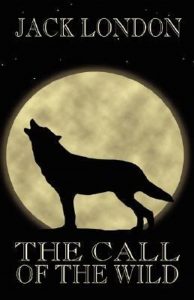The Call of the Wild Analysis
Where did man come from?
Scientists thought they had answered this simple yet complex question through Charles Darwin's theory of evolution. According to him, living organisms evolved due to constant changing. Organisms which gained an edge would reign, while those without would die. Jack London's books during the late 1800's animated this theory through the use of wild animals in a struggle for survival. In fact, many prove that to survive a species "must" have an edge.

Order custom essay The Call of the Wild Analysis with free plagiarism report
 450+ experts on 30 subjects
450+ experts on 30 subjects
 Starting from 3 hours delivery
Starting from 3 hours delivery
In London's book the Call of the Wild, the harsh depiction of the Klondike wilderness proves that to survive life must adapt. London uses Buck as his first character to justify his theory as he conforms well to the hostile North. While at Judge Miller's, pampered Buck never worries about his next meal or shelter; yet while in the frozen Klondike he has death at his heels. Until his body adapts to the strenuous toil of the reins, Buck needs more food than the other dogs.
He must steal food from his masters in order to conform. If Buck continues his stealthy work he will survive. A second example occurs when Thorton owns Buck, and Spitz, the lead dog, constantly watches the team in a dominant manner. Buck, if insubordinate, runs the risk of death. He lays low, learning Spitz's every tactic. Buck adapts to circumstances until finally he strikes against Spitz in a fight for the dominant position.
By killing Spitz, he gains a supreme air, and in turn an adaptation against the law of the fang. A third example surfaces during Buck's leadership. The fledgling dog, to Francios and Perrault, cannot work up to par for the lead. So Buck conducts himself as a master sled dog, reaching Francios and Perrault's goals, conforming to the team.
The group plows through snow reaching at least forty miles a day. The dogs spend at most two weeks in the wild Klondike. In a way Buck heightens the safety of each person and dog. He adapts to the environment and new position. Within the Call of the Wild, Buck must have a part to justify London's theory. In the novel London uses Mercedes, Hal, and Charles, a group of very inexperienced and even less equipped city goers, to depict the probable doom of those who do not adapt.
While in Skagway the three have no idea what the Klondike holds. The well dressed well fed team wants nothing but riches and fame. In their effort for time they purchase the now exhausted dog team, which Buck leads, to take them to Dawson. Even during the beginnings of their journey they show their inevitable doom. Mercedes, the most hardheaded of the bunch parks load after load on the sled. Onlookers laugh at the sight, telling the group that the sled will tip.
In their arrogance the warning goes without notice, soon to find the now moving sled strewn across the street. The next incident proves their stubbornness to adapt to the environment. After many weeks of toil Charles, Hal, and Mercedes reach White river, where they find Thorton, a mail courier with frost bite. The team drops dead in the traces. Hal's philosophy pertains to the use of the whip. Beating after beating occurs but the team does not get up.
Buck, the lead dog, gets the brunt of the attack until Thorton steps in. He fights Hal and wins Buck. So the beaten Hal moves on, not heeding Thorton's warning of thin ice. Their doom arrives in a tumult of ice and water. All of the team dies in the cold murky lake. These three characters show a second side of adaptation that is very true.
Thorton and Buck reach a final adaptation in their quest for fortune, which creates the man and beast which rise above all. John Thorton asked little of man or nature. During the search for the hidden treasure mine Thorton travels in no hurry. He ventures Indian fashion, hunting food with his hands, using his cunning to overcome.
If he fails, Thorton keeps on traveling knowing that eventually he will find food. Thorton has adapted, and now he has the power to fend off the wilderness. Buck also reaches his own acme which creates the super being. After Thorton's death a pack of wolves attacks Buck. He holds his ground crippling dog after dog. By using primitive instincts, his killer instincts, Buck does not fall. Rather he destroys the others until they are to tired to fight. The victory makes him the leader of the pack.
He has become the super being that reigns over all. As to London's theory, Buck and Thorton's adaptation proves it without a doubt. Due to the harsh and wild depiction of the Klondike wilderness in Call of the Wild, London's theory proves true. Through the use of wild creatures and people, London creates a visualization of how adaptation makes someone strong and well fit for their environment.
He also teaches that if a great enough adaptation occurs, that the organism will rise above all obstacles. In conclusion, if the average person adapts to their position in life and strives to reach their own personal best they too, like Buck, will become the leader of the pack.
Cite this Page
The Call of the Wild Analysis. (2019, Dec 12). Retrieved from https://phdessay.com/the-call-of-the-wild-analysis-12/
Run a free check or have your essay done for you


